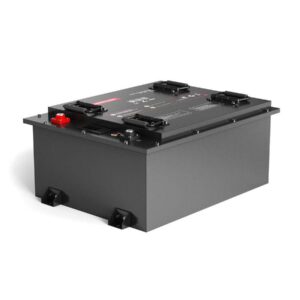
What Will 2025 Golf Cart Battery Prices Look Like?
What factors influence 2025 golf cart battery prices? Prices depend on battery type (lead-acid, lithium-ion), capacity, brand, and technological advancements. Lithium-ion batteries are pricier but offer longer lifespans, while lead-acid remains budget-friendly. Market trends like raw material costs and sustainability mandates also shape pricing. Expect lithium-ion dominance by 2025 due to efficiency demands.
What factors influence golf cart battery replacement costs?
How Do Lead-Acid and Lithium-Ion Battery Prices Compare for 2025?

Lead-acid batteries range from $600-$1,200 per pack, while lithium-ion systems cost $1,500-$3,500+. By 2025, lithium prices may drop 10-15% due to scaled production, but lead-acid remains cheaper upfront. Lithium’s 2,000-5,000-cycle lifespan offsets long-term costs, making it cost-effective for frequent users despite higher initial investment.
The price gap between technologies is narrowing as lithium production efficiencies improve. Recent cobalt-free lithium iron phosphate (LFP) designs reduce material costs by 18-22% compared to traditional NMC batteries. However, lead-acid still dominates the replacement market for older carts due to compatibility. Charging infrastructure also plays a role—lithium’s faster charging (2-3 hours vs. 8-10 for lead-acid) reduces downtime costs for commercial operators. Environmental factors will further tip scales: 23 states now impose lead battery recycling fees ($15-$45 per unit), eroding lead-acid’s price advantage.
| Battery Type | 2025 Price Range | Cycle Life | Weight (lbs) |
|---|---|---|---|
| Flooded Lead-Acid | $650-$1,100 | 500-800 | 62-70 |
| AGM | $900-$1,400 | 600-1,000 | 58-65 |
| Lithium-Ion | $1,600-$3,200 | 2,000-5,000 | 28-35 |
Which Brands Offer the Best Value for 2025 Golf Cart Batteries?
Trojan (lead-acid) and RELiON (lithium) lead in reliability. Epoch Lithium and Eco-Battery merge affordability with smart tech like Bluetooth monitoring. Club Car’s OEM batteries prioritize compatibility but cost 20% more. Redway Power’s modular lithium packs provide customizable voltage, appealing to retrofitted carts. Compare warranties—5-year lithium warranties outperform 1-3-year lead-acid coverage.
Brand differentiation is accelerating as companies bundle services with batteries. Trojan’s PRO+ series now includes free water testing kits and acid stratification prevention tools. RELiON’s LT series features cold-weather performance down to -4°F, crucial for northern courses. For budget-conscious buyers, Duracell’s GC2 line offers sealed lead-acid options at 12% below market average. Meanwhile, Eco-Battery’s subscription model provides battery-as-a-service with free replacements—ideal for fleets needing predictable costs. Always verify third-party certifications: UL 2580 for lithium safety and BCI standards for lead-acid performance.
How Will Sustainability Regulations Affect 2025 Battery Prices?
Stricter recycling laws (e.g., EU Battery Directive) may raise lead-acid costs by 8-12% due to eco-fees. Lithium suppliers investing in closed-loop recycling (Redwood Materials) could lower prices. Carbon taxes on lead smelting and incentives for lithium adoption (U.S. Inflation Reduction Act) will reshape 2025 pricing structures, favoring eco-friendly brands.
Are Solar-Integrated Golf Cart Batteries Worth the 2025 Price Premium?
Solar-compatible lithium packs (e.g., Dragonfly Energy) cost $2,800-$4,200 but reduce grid dependency by 40-60%. ROI depends on usage—commercial courses save $1,000+ yearly, while casual users break even in 5-7 years. Federal solar tax credits (26% through 2024) offset initial costs, making 2025 solar hybrids viable for eco-conscious buyers.
What Emerging Technologies Could Disrupt 2025 Battery Pricing?
Solid-state batteries (QuantumScape) promise 50% more density but won’t commercialize until 2026-27. Graphene-enhanced lead-acid (Firefly Energy) may bridge the gap, offering 3x lifespan at 1.2x cost. AI-driven battery management systems (BMS) optimize charging, extending pack life by 20-30%—a hidden value factor for 2025 buyers prioritizing longevity over sticker price.
“The 2025 market will bifurcate,” says Redway’s CTO. “Budget buyers stick with advanced lead-acid, but lithium becomes standard for new carts. We’re seeing 48V lithium systems hit $1,800—a 22% drop from 2023. However, cobalt-free alternatives (LFPs) will dominate, reducing geopolitical risks and price volatility seen in nickel-manganese-cobalt chemistries.”
Conclusion
2025 golf cart battery pricing balances upfront costs vs. long-term value. Lithium-ion’s efficiency gains and falling prices make it the future standard, though lead-acid retains niche appeal. Buyers must evaluate total ownership costs, brand warranties, and regulatory trends. Emerging tech and sustainability mandates will keep the market dynamic, with solar integration and AI optimization as key differentiators.
News
1. Stabilization of Lithium Prices Expected to Influence Golf Cart Battery Costs
In January 2025, analysts projected that lithium prices would stabilize after two years of significant declines. This stabilization is attributed to mine closures and robust electric vehicle sales in China, which have helped balance the oversupply. As lithium is a key component in lithium-ion golf cart batteries, this price stabilization may lead to more predictable battery costs in the near future.
2. Shift Towards Lithium-Ion Batteries in Golf Carts Continues
The golf cart industry is increasingly transitioning from traditional lead-acid batteries to lithium-ion alternatives. This shift is driven by lithium-ion batteries’ superior energy density, longer lifespan, and reduced charging times, aligning with the broader trend towards eco-friendly and efficient energy solutions.
3. U.S. Golf Cart Lithium Battery Market Poised for Growth
As of March 2025, the U.S. golf cart market is experiencing significant growth, particularly in the adoption of lithium batteries. This trend is fueled by the increasing use of golf carts beyond golf courses, such as in resorts and gated communities, and the advantages of lithium batteries, including longer lifespan and faster charging.
FAQs
- How Long Do 2025 Golf Cart Batteries Last?
- Lead-acid: 4-6 years (500-800 cycles). Lithium-ion: 8-12 years (2,000-5,000 cycles). Usage patterns and maintenance critically impact lifespan.
- Can I Upgrade My Old Cart to 2025 Lithium Batteries?
- Yes, but ensure compatibility with voltage/controller systems. Retrofit kits from Redway or Eco-Battery cost $1,200-$2,500, including BMS and wiring.
- Are Used 2025 Golf Cart Batteries a Smart Buy?
- Risky for lithium due to hidden degradation. Lead-acid used batteries ($200-$500) may offer 1-2 years’ service but lack warranties. Prioritize new packs with performance guarantees.
